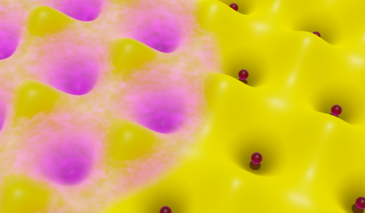Niclas Götting, Frederik Lohof, and Christopher Gies
Phys. Rev. B 105, 165419 (2022)
In bilayers of semiconducting transition metal dichalcogenides, the twist angle between layers can be used to introduce a highly regular periodic potential modulation on a length scale that is large compared to the unit cell. In such structures, correlated states can emerge, in which excitons in the heterostructure are strongly localized to the potential minima due to exciton-exciton interactions. We explore the transition between Mott and extended exciton phases in terms of a moiré-Bose-Hubbard Hamiltonian. Hopping and on-site interaction parameters are obtained from a Wannier representation of the interlayer-exciton wave functions, and a nonlocal Rytova-Keldysh model is used to attribute for the dielectric screening of excitons in the two-dimensional material. For sufficiently small exciton concentrations and substrate screening our model predicts the emergence of Mott-insulating states, establishing twisted transition metal dichalcogenide heterostructures as possible quantum simulators for bosonic many-body systems.

![[Translate to English:]](/fileadmin/user_upload/sites/bccms/images/logos/bccms-logo-2022-subline-padded-up.png)
